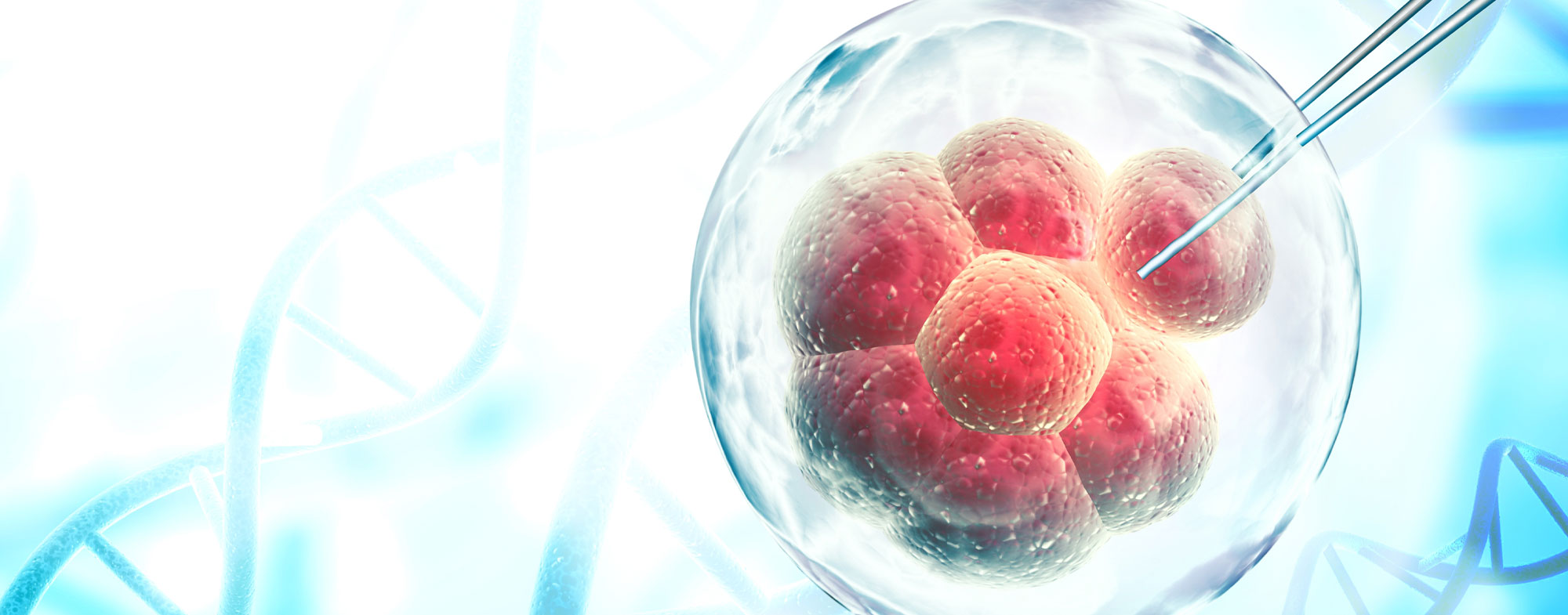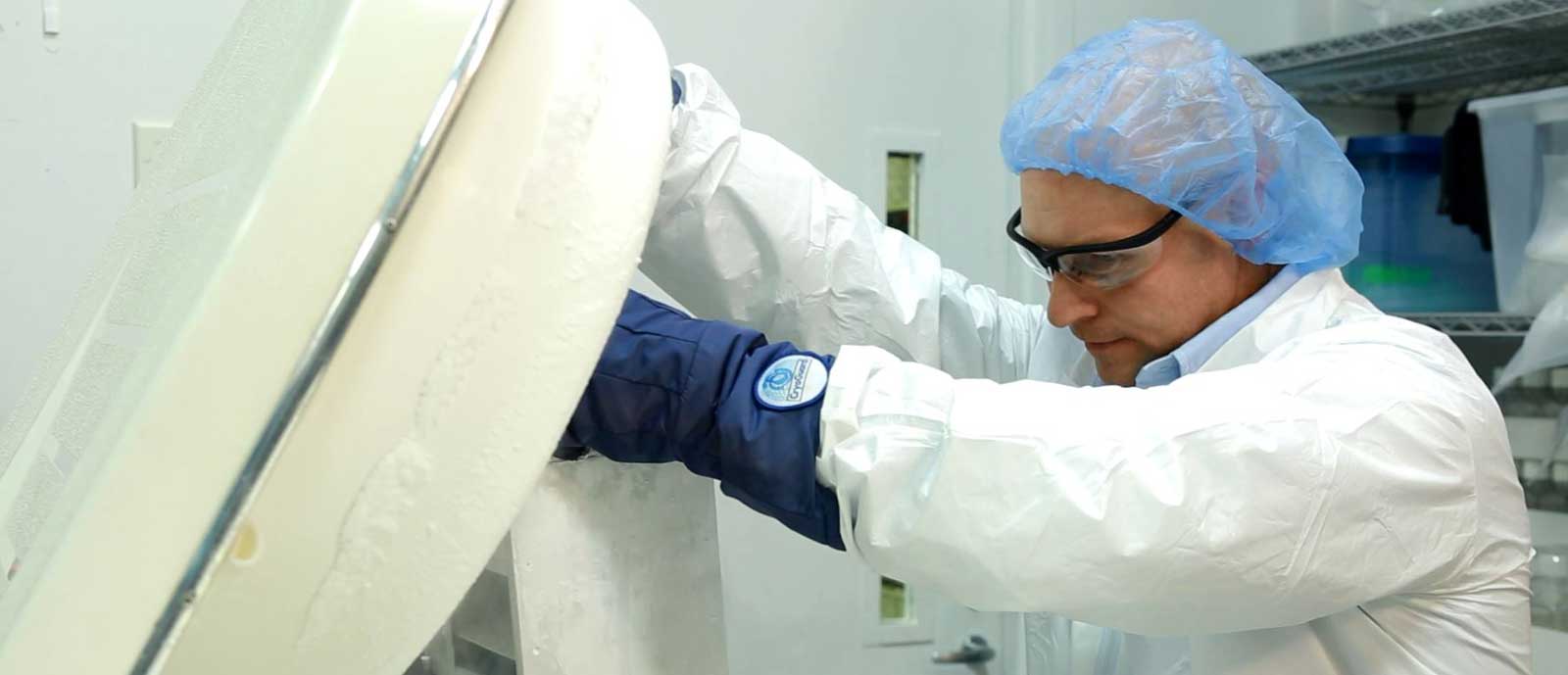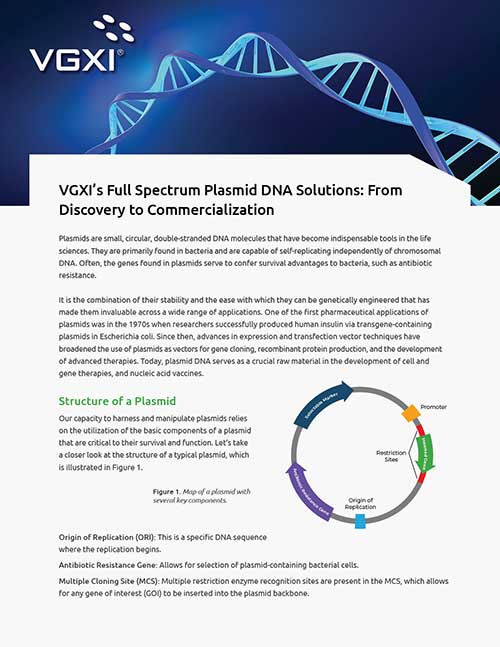Cell Therapy
Gene-modified cell therapy or ex vivo gene therapy involves the genetic modification of cells outside the body before infusion into the patient to combat diseases. The most notable example is chimeric antigen receptor T-cell (CAR T-cell) therapy, which has changed the treatment landscape for treating hematological malignancies like B-cell lymphoma and leukemia where conventional therapies have failed. Lentivirus-mediated gene transfer is most commonly used for T cell engineering because recombinant lentiviral vectors (LV) can transduce dividing and nondividing cells.
Current LV systems generate virus particles using four plasmids and a producer cell line: The ‘transfer plasmid’ or lentiviral vector contains the transgene of interest, while the ‘envelope plasmid’ contains genes for proteins that appear on the virus surface. These plasmids are co-transfected into the producer cell line to generate LV particles.
VGXI has a demonstrated track record in manufacturing plasmids critical for a range of AAV serotypes across diverse scales and quality tiers – from Pre-Clinical, HD, and cGMP levels. We provide comprehensive support from the very start, from initial plasmid design and master cell bank generation to process development activities to customize and optimize manufacturing based on specific project needs (i.e., with or without antibiotic selection). Trust us to help you to advance your cell therapy programs with success—on budget, and on time.



